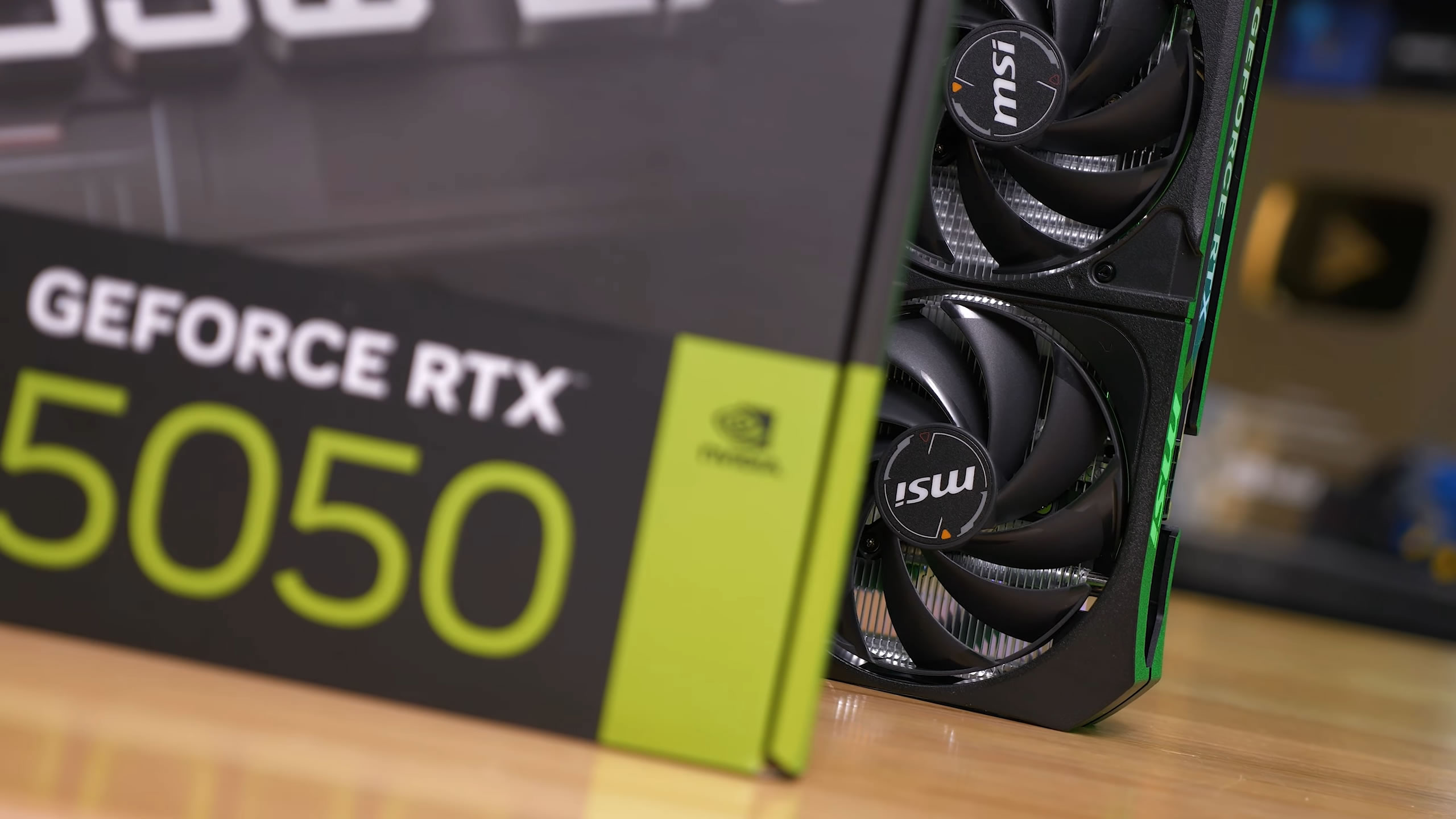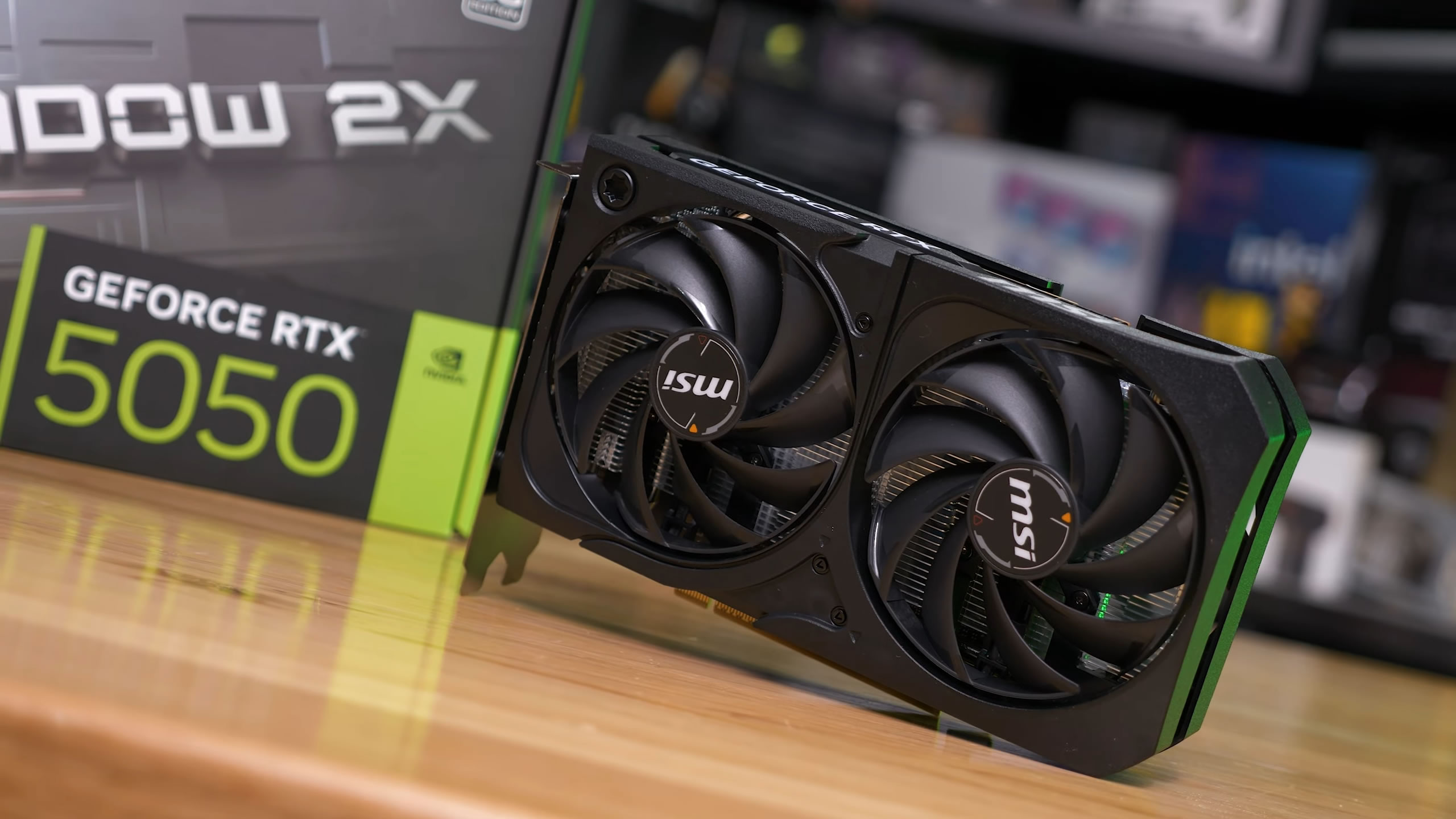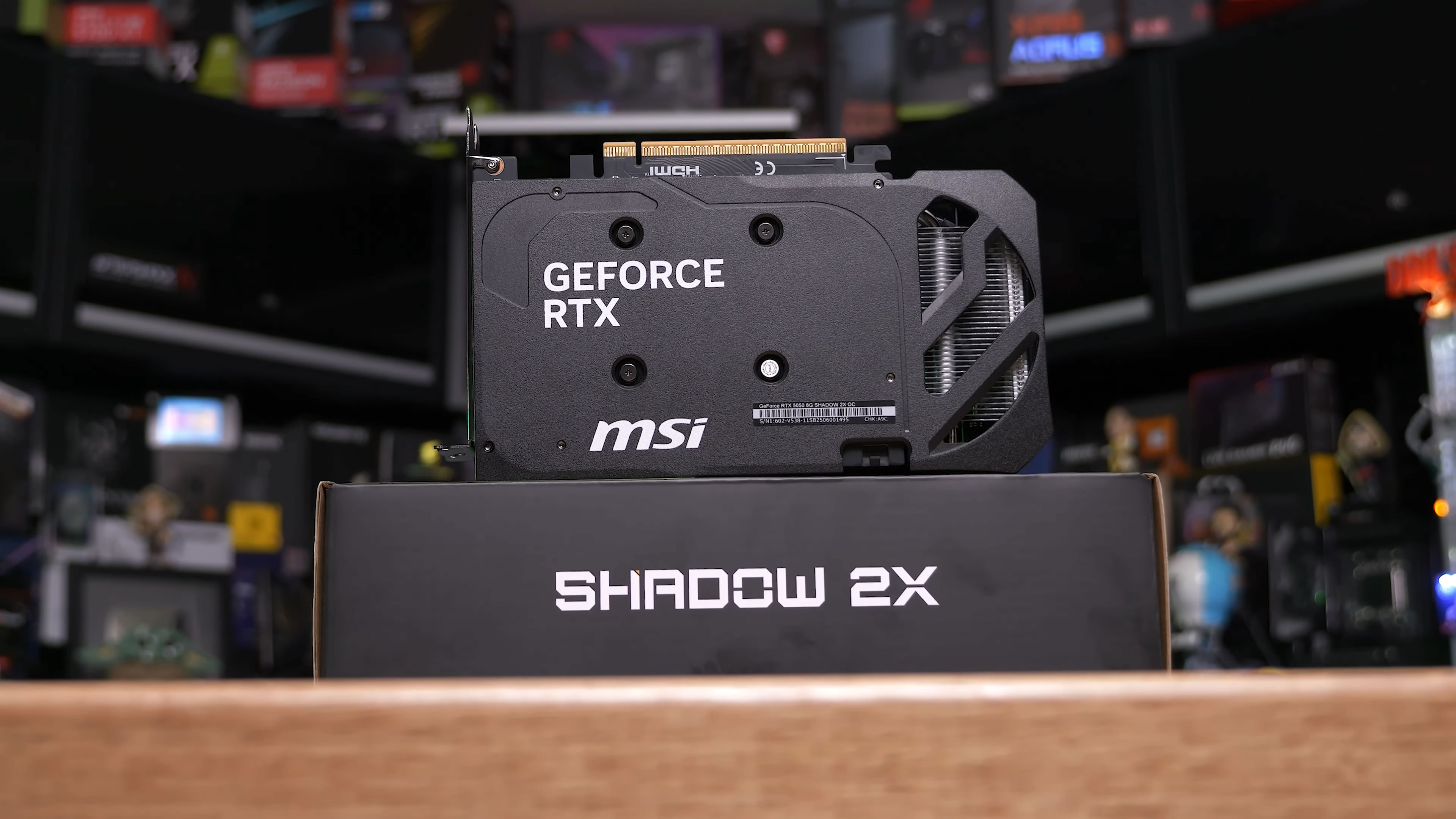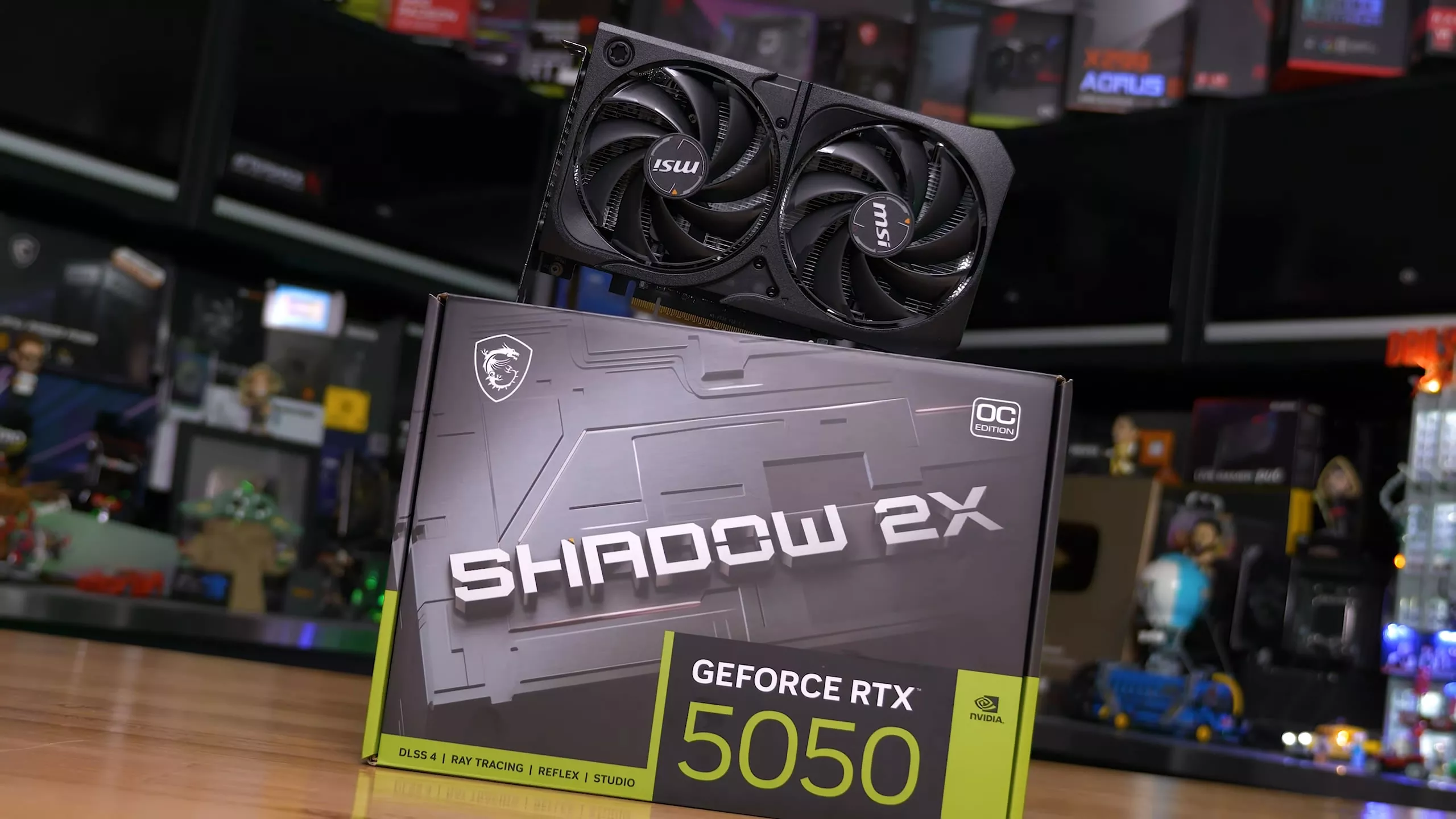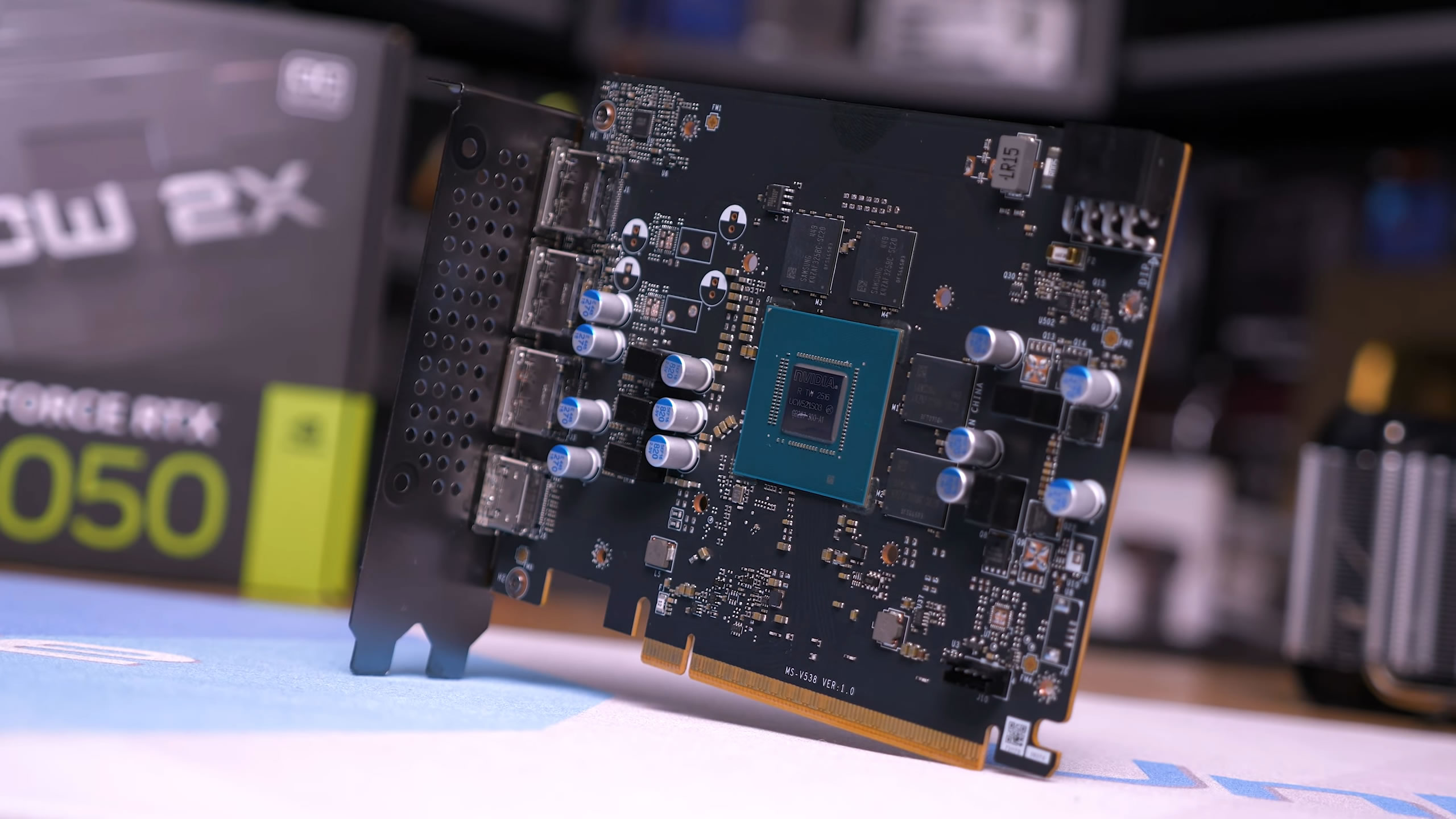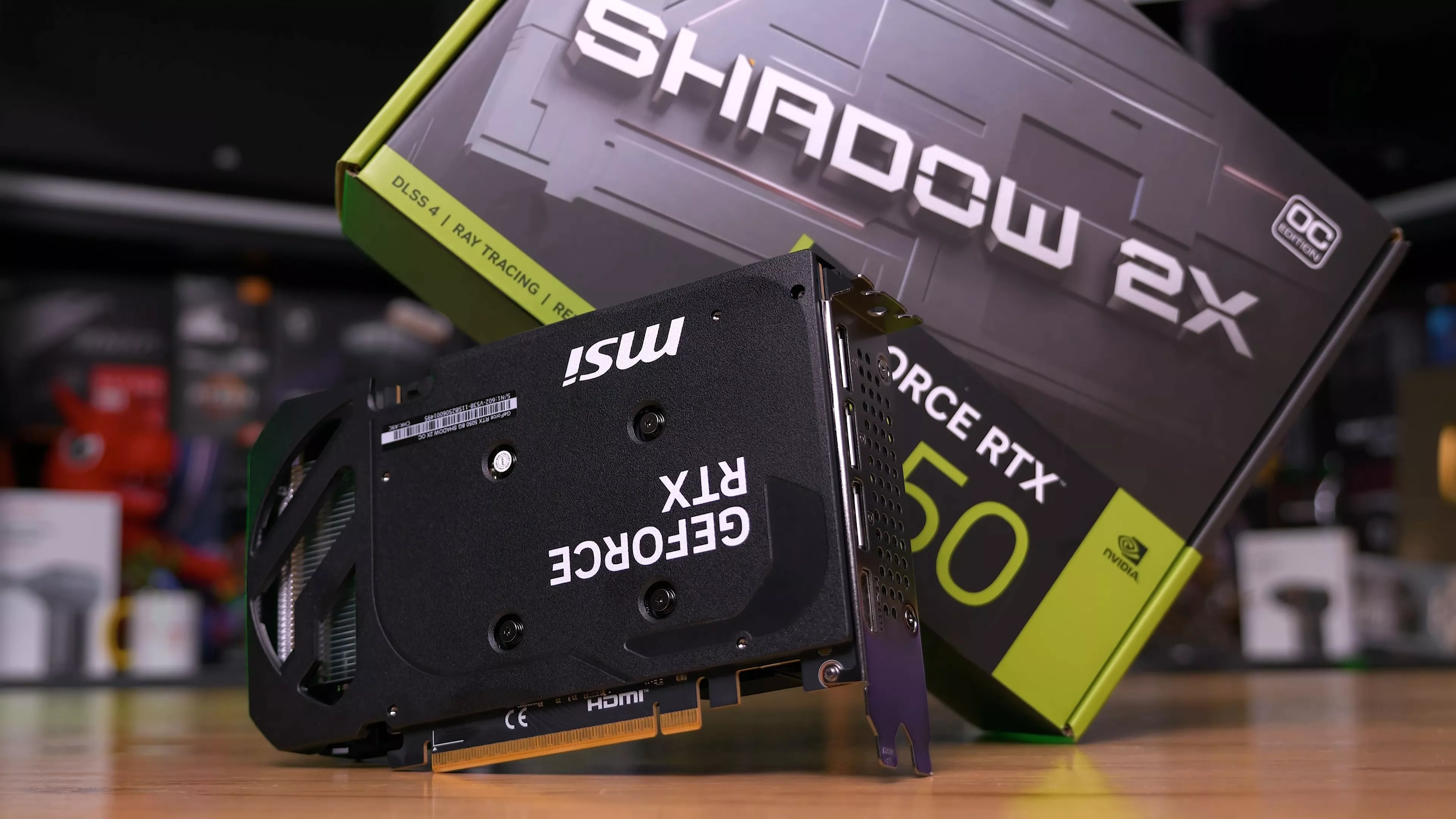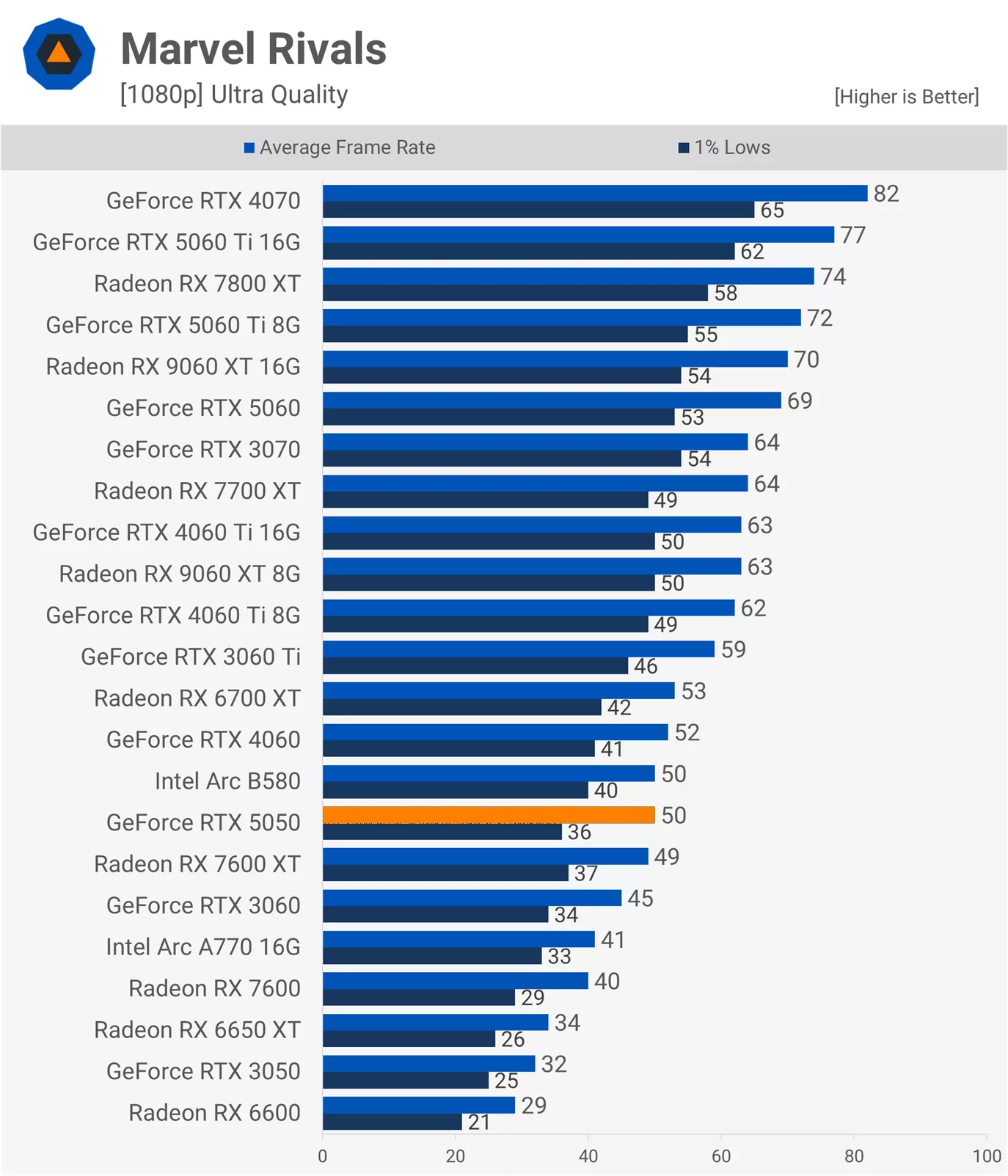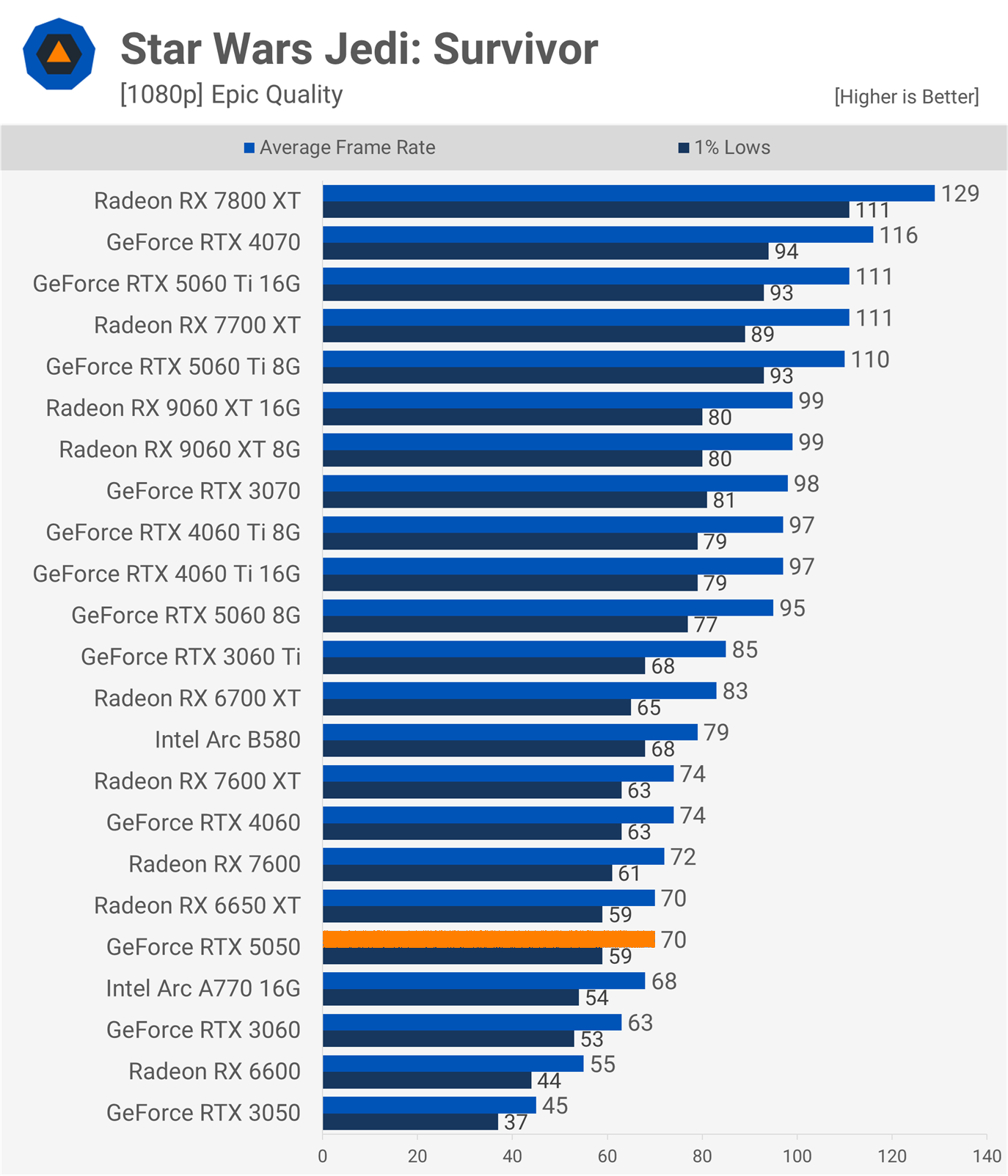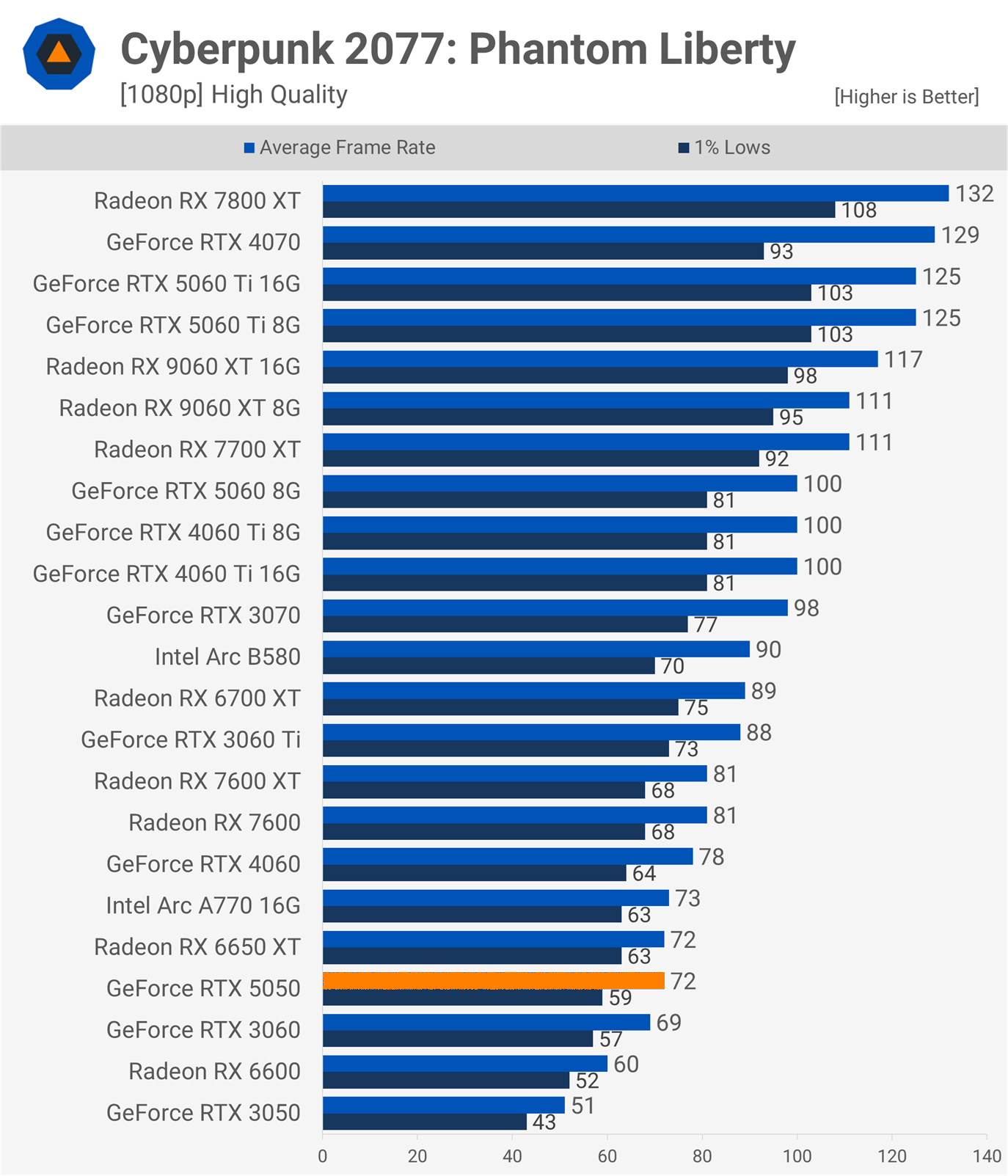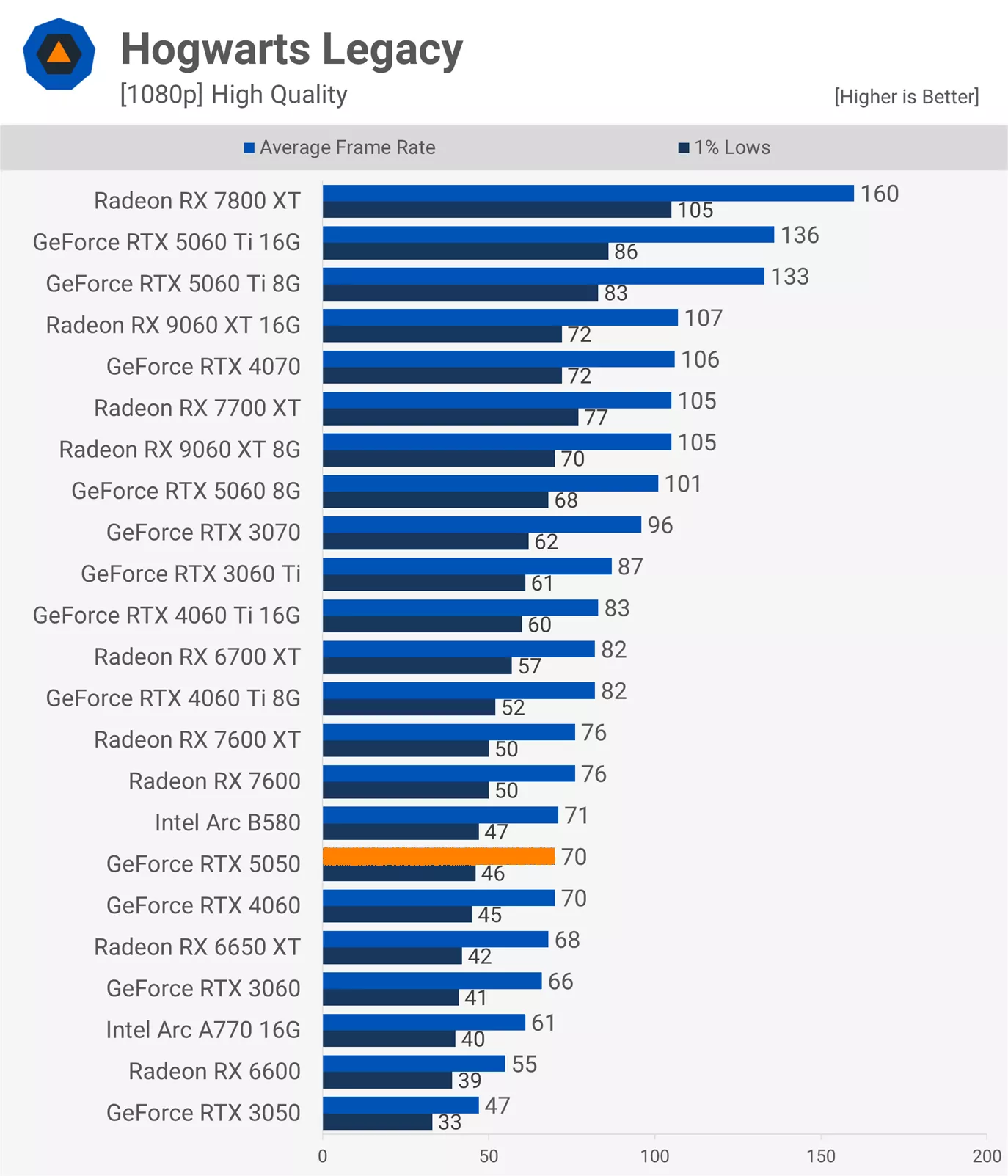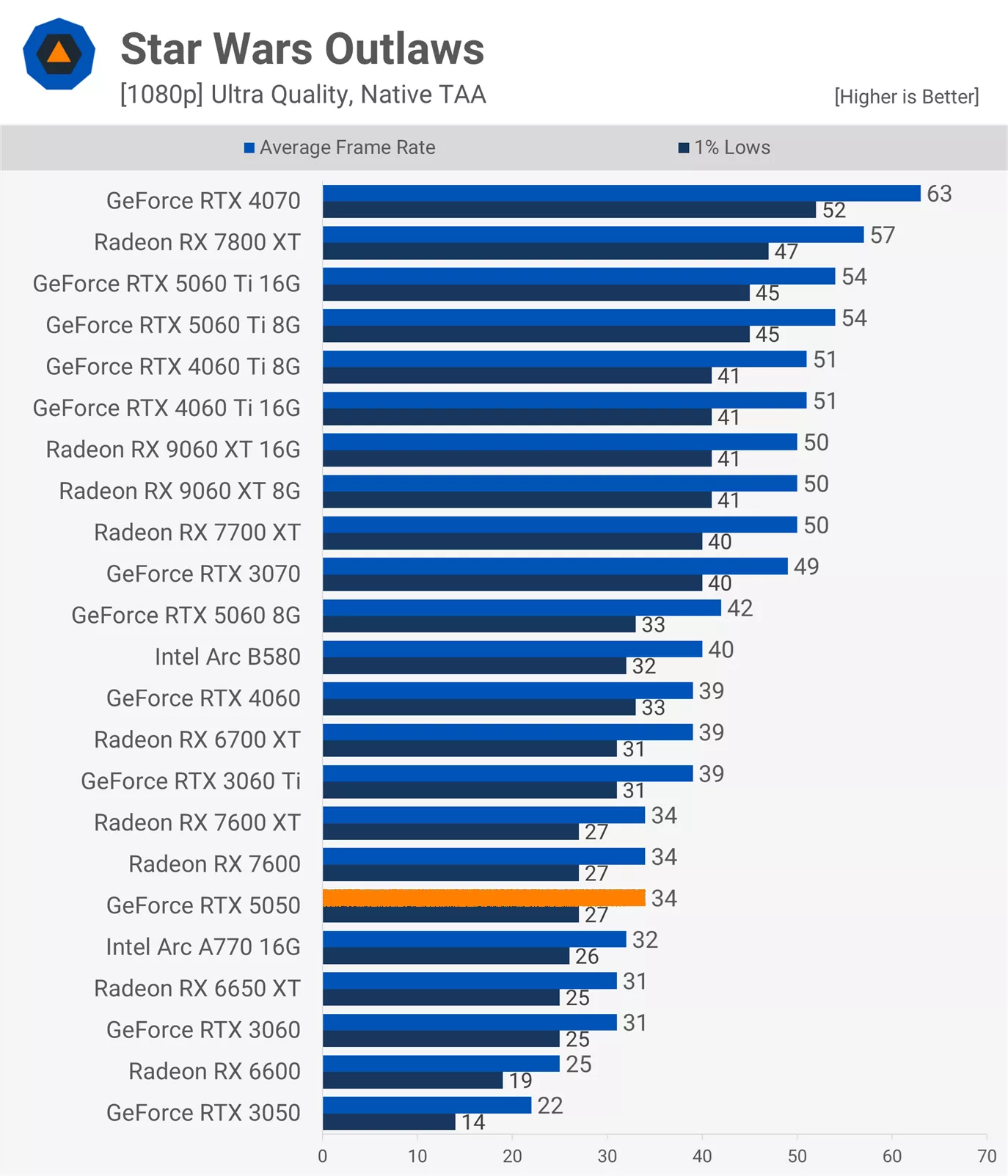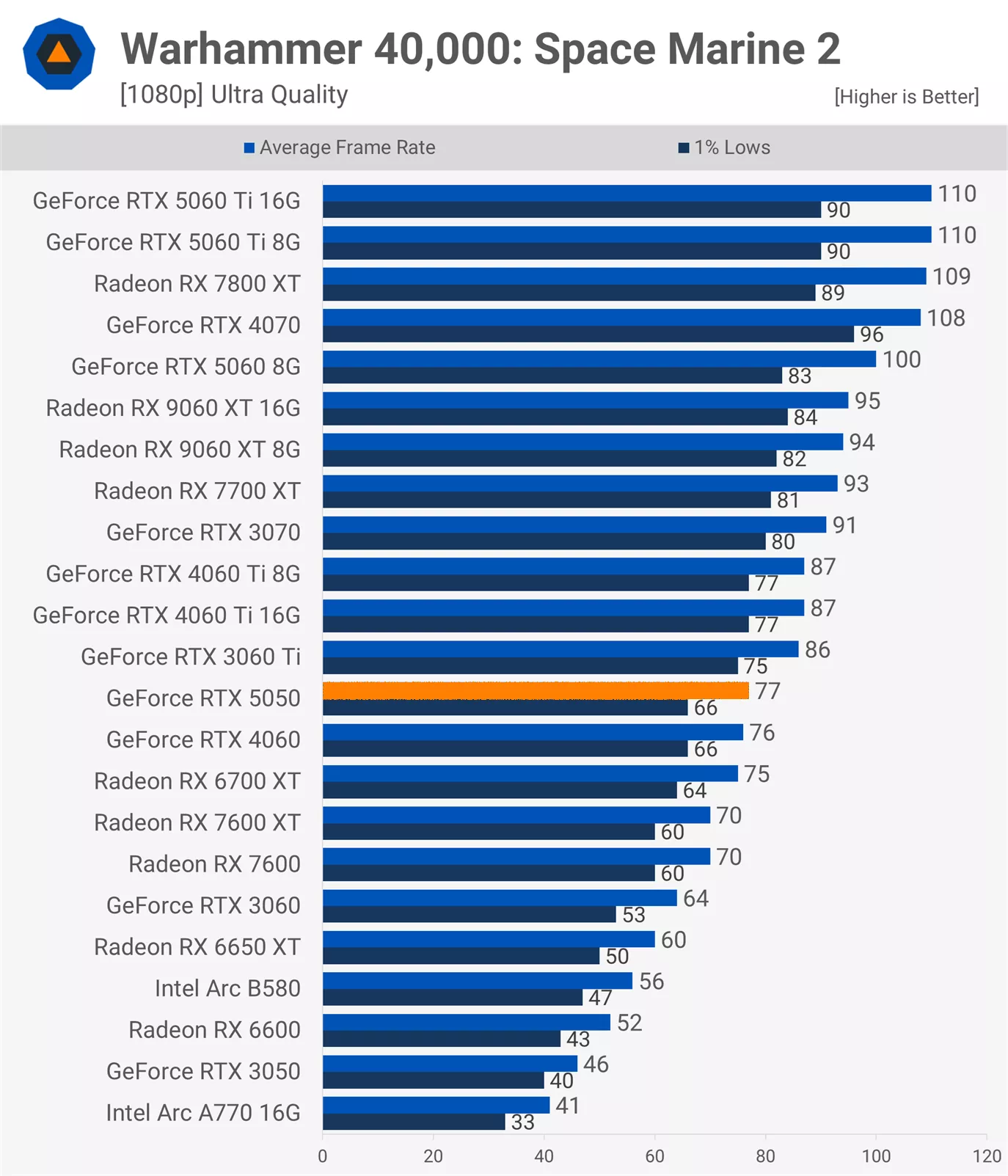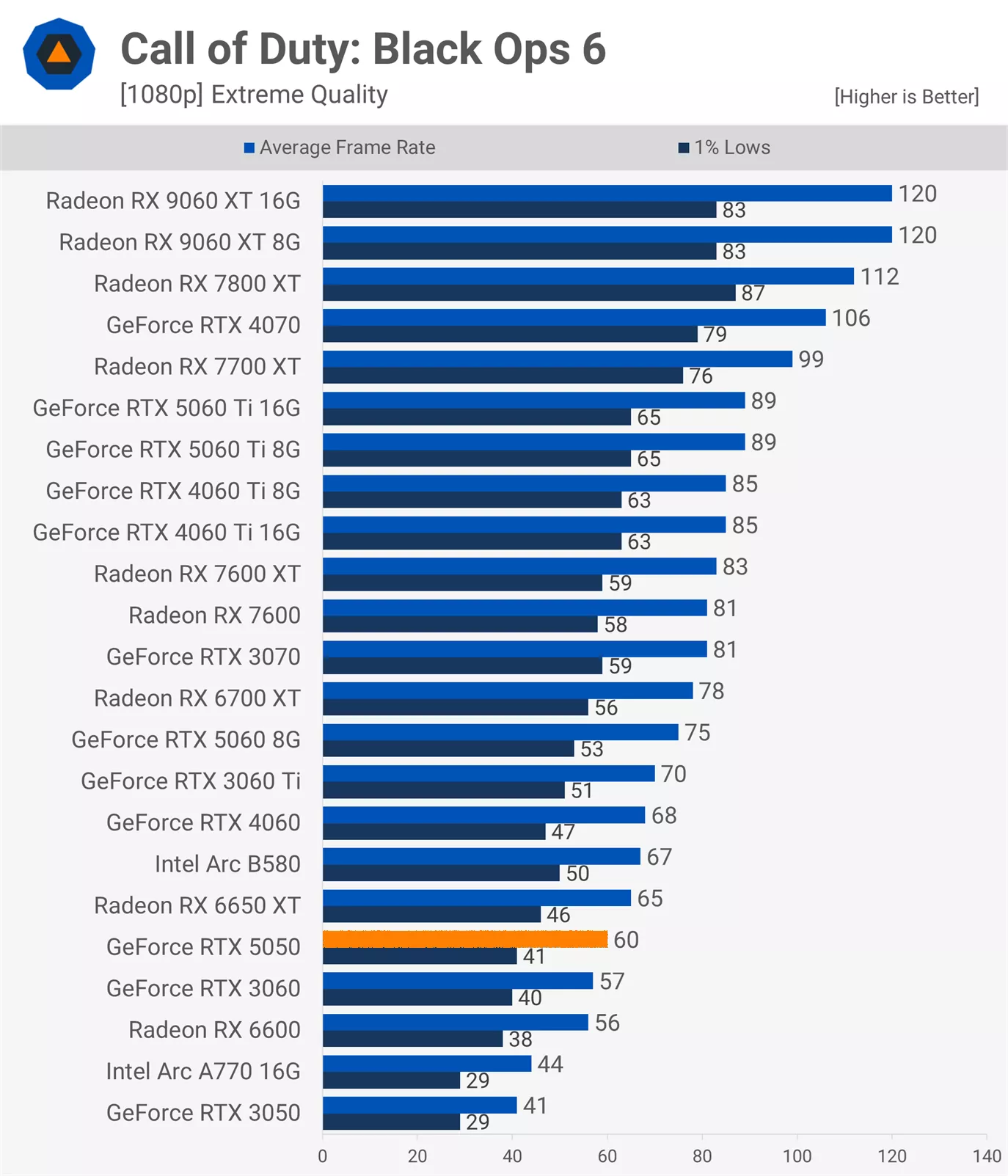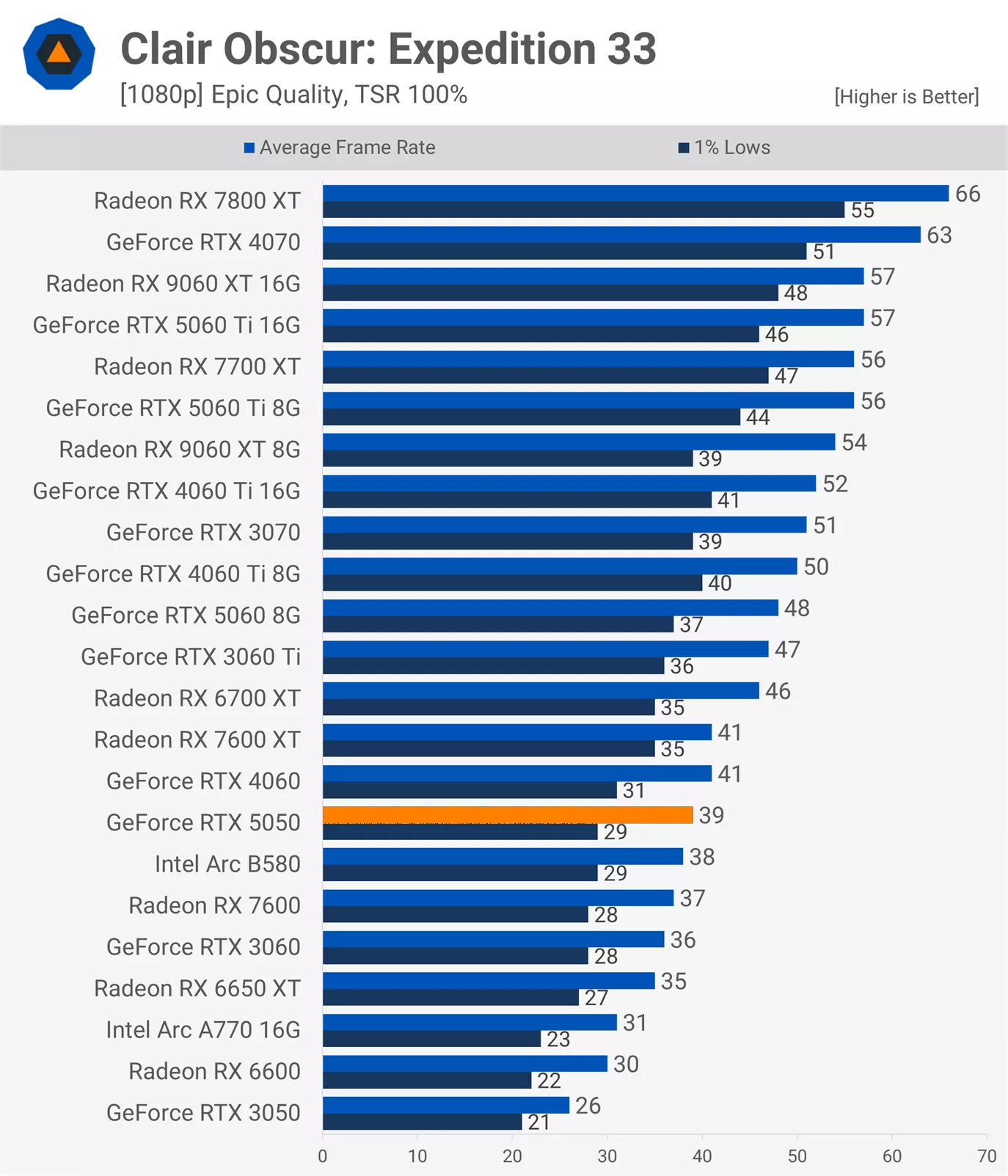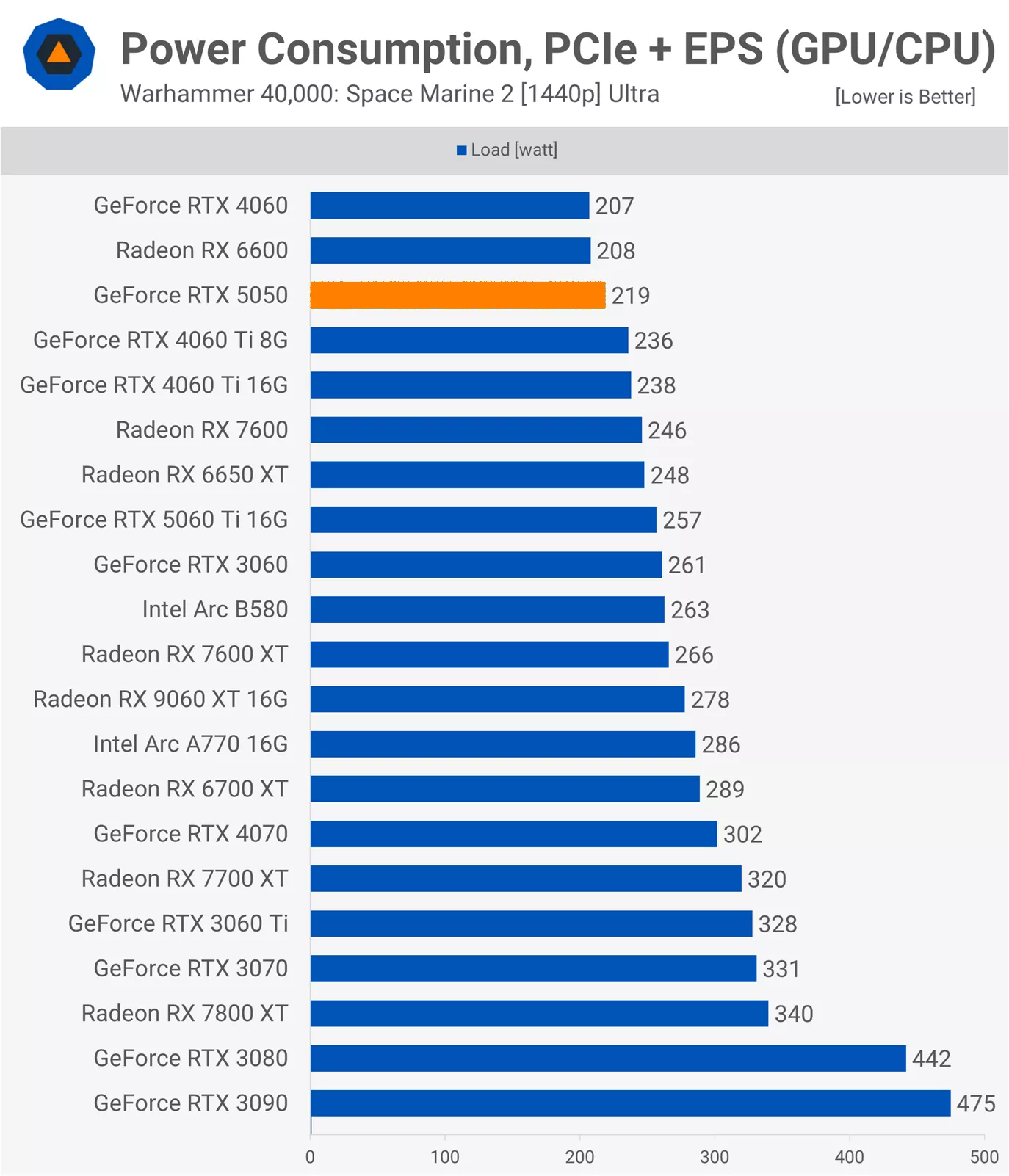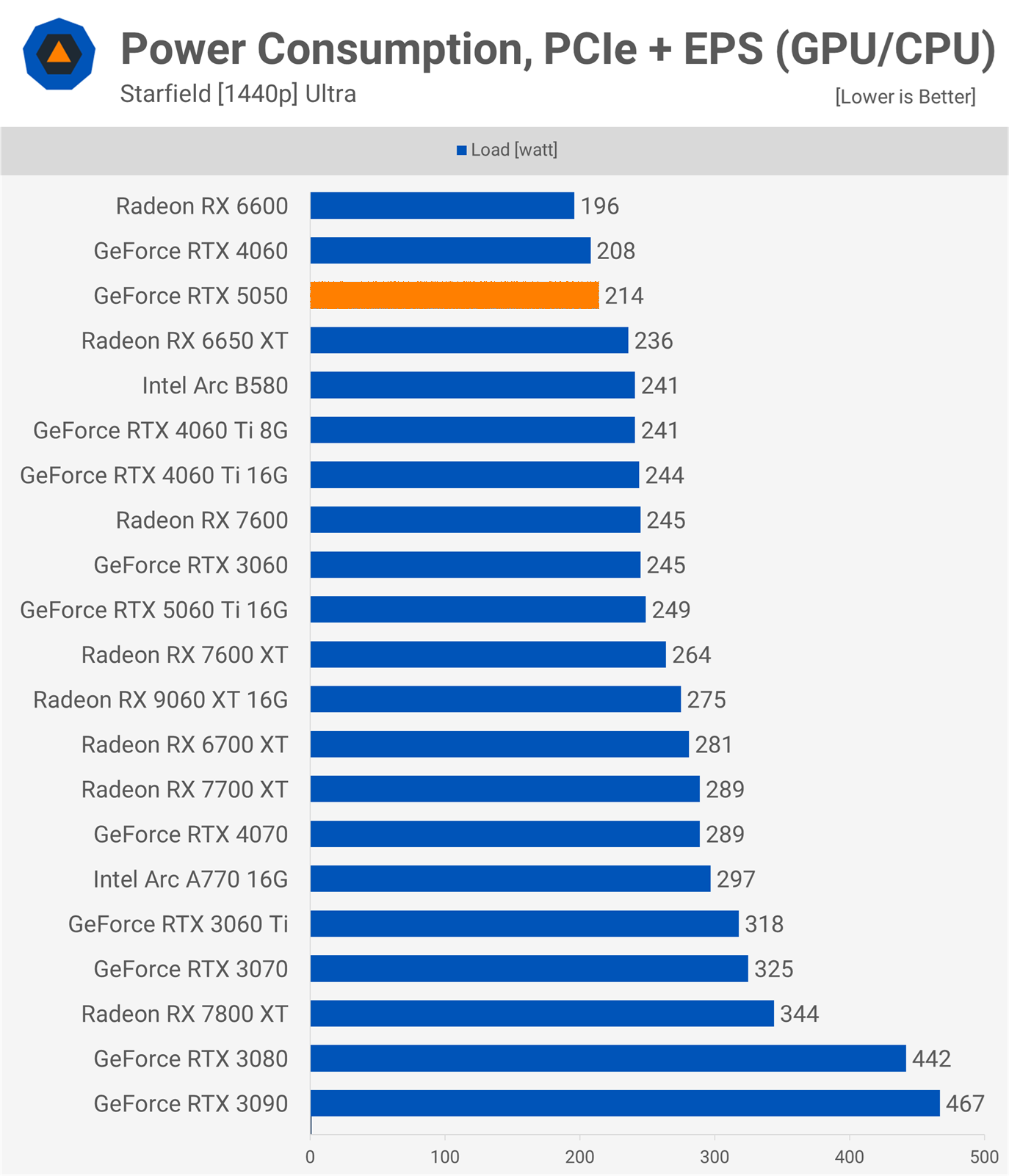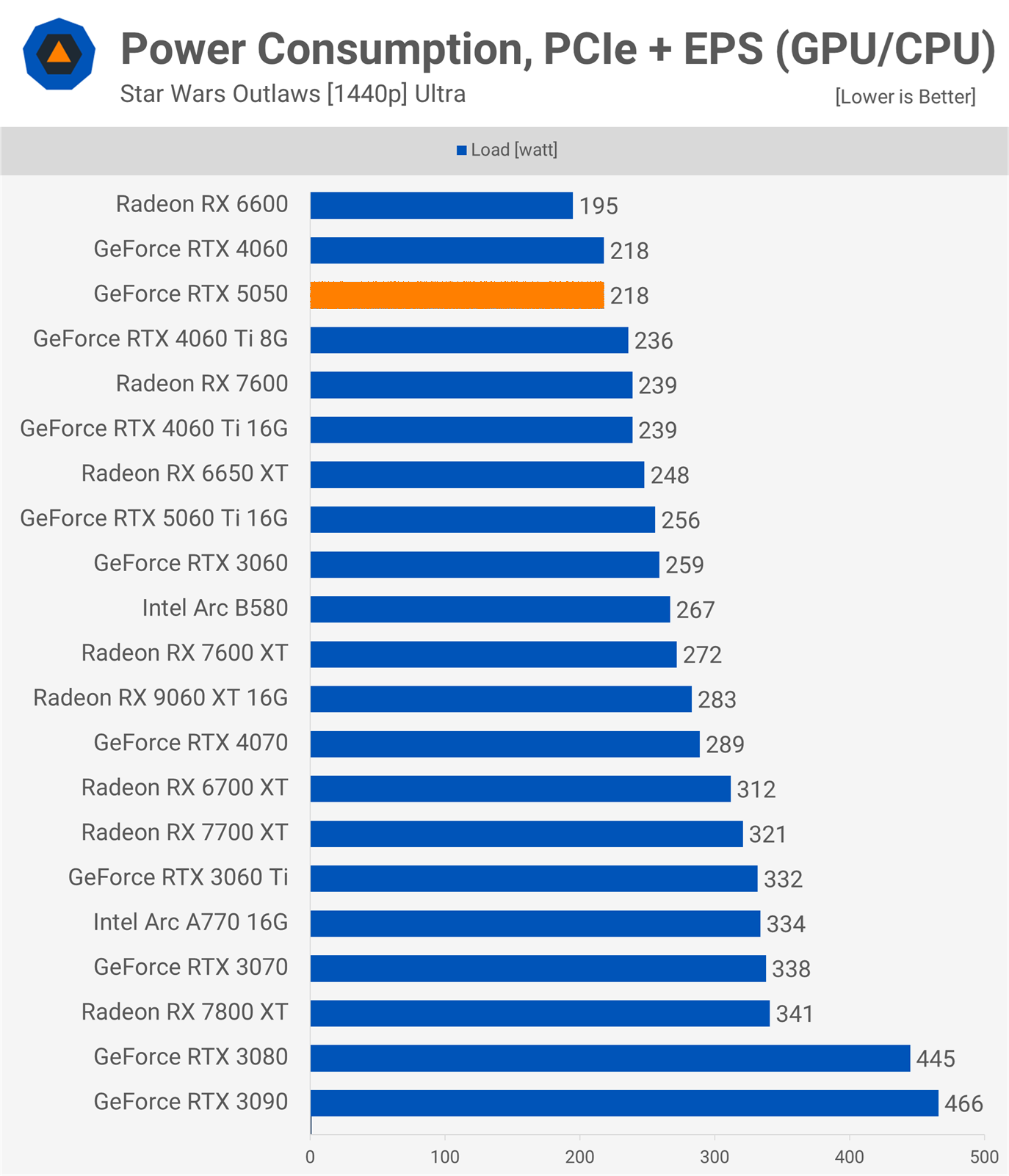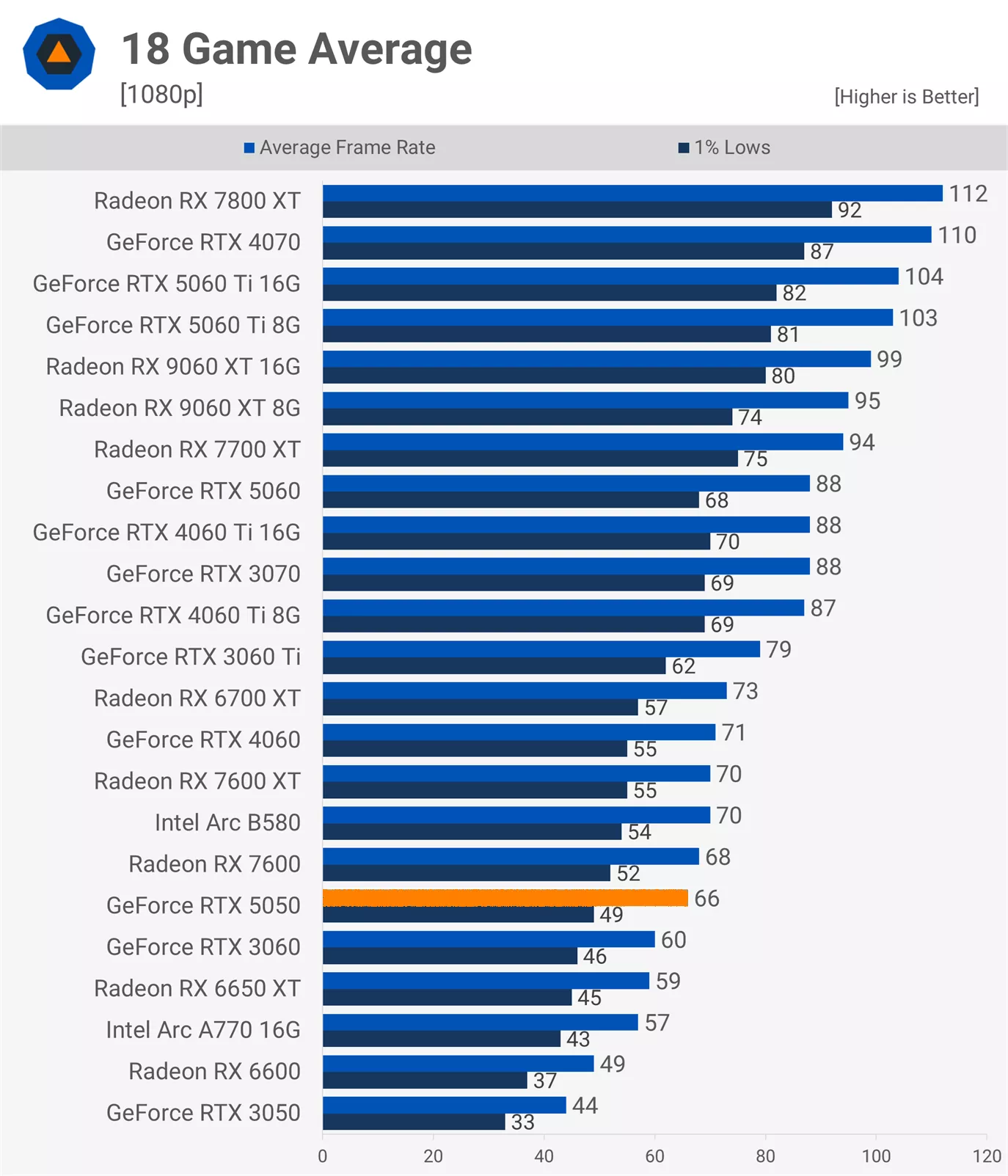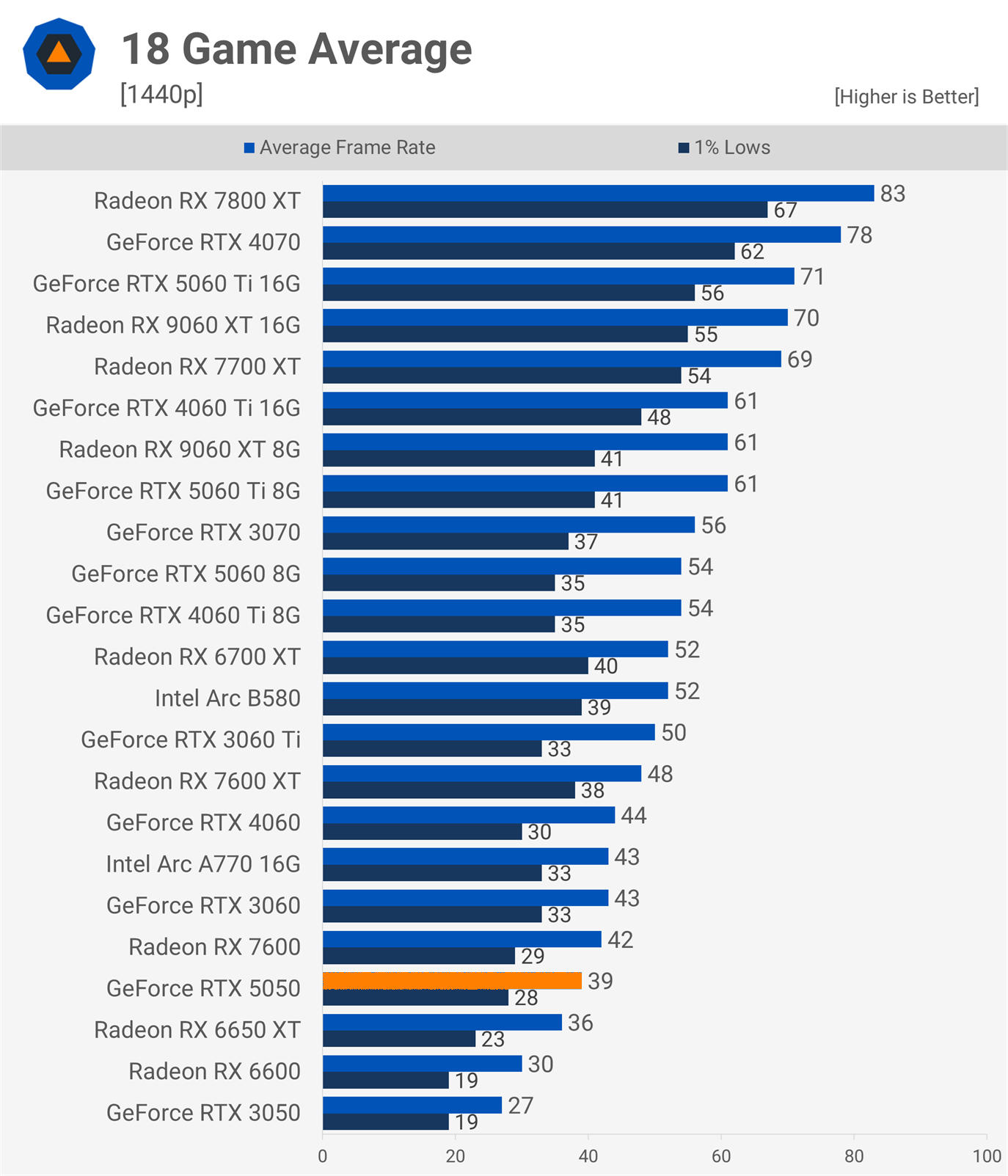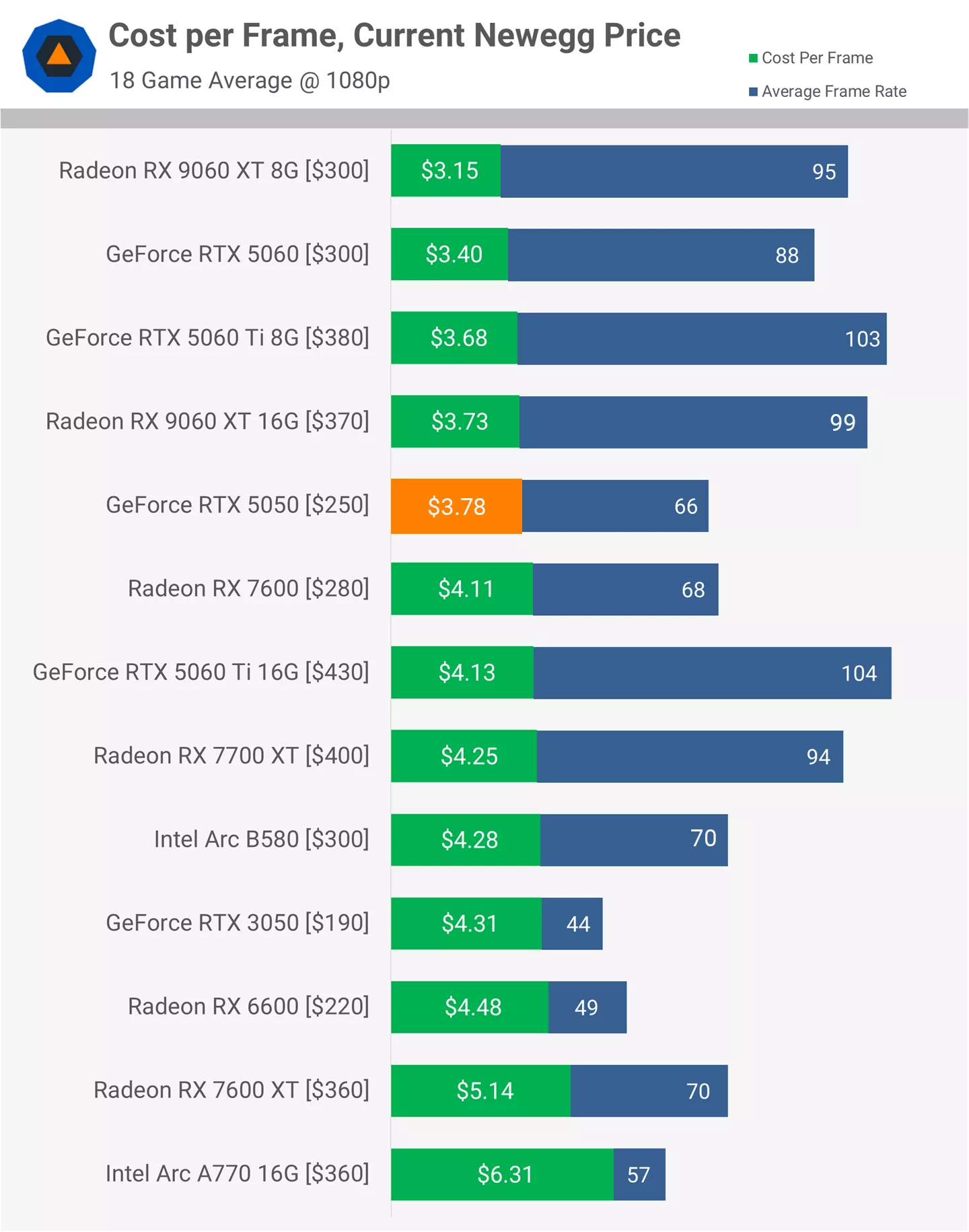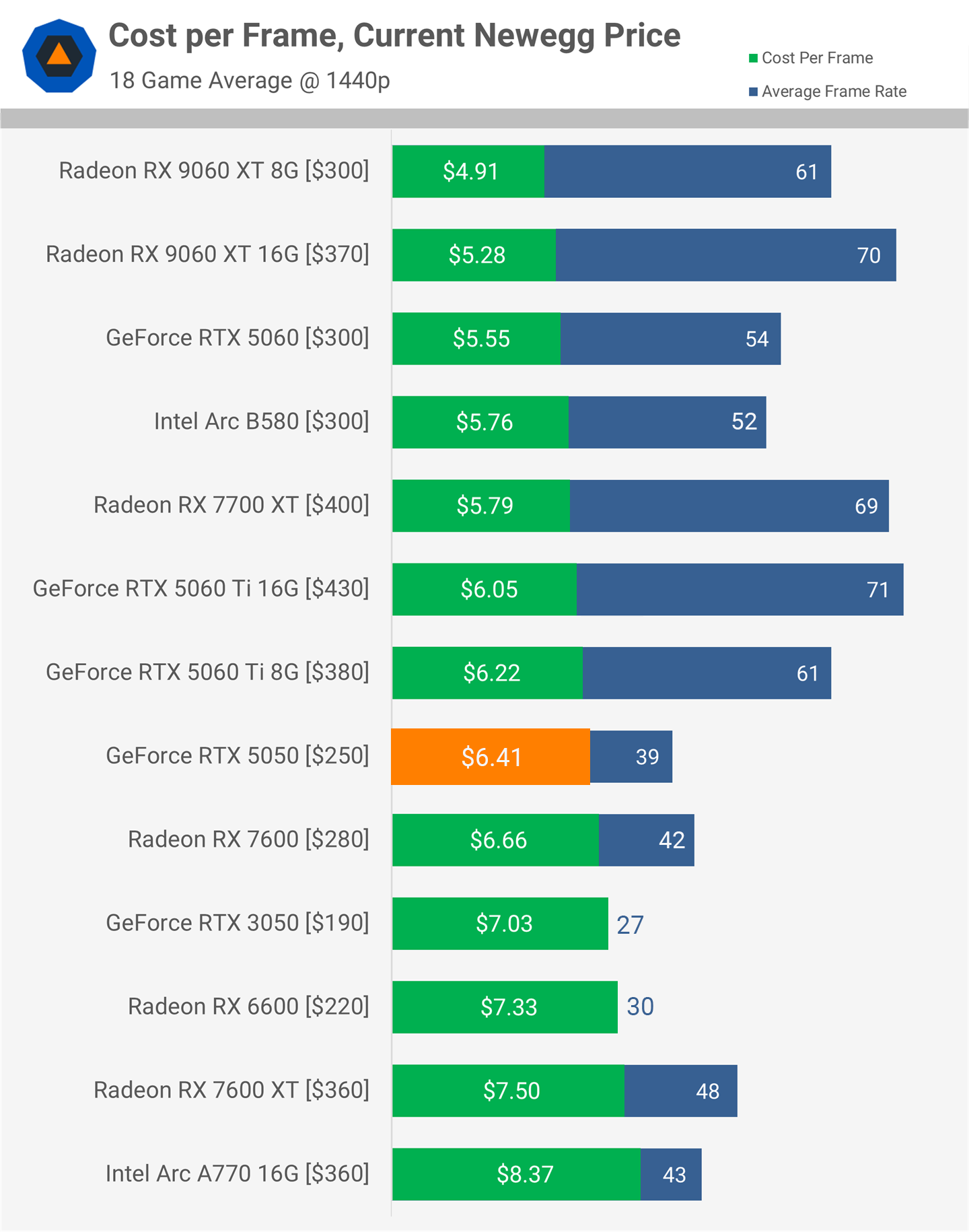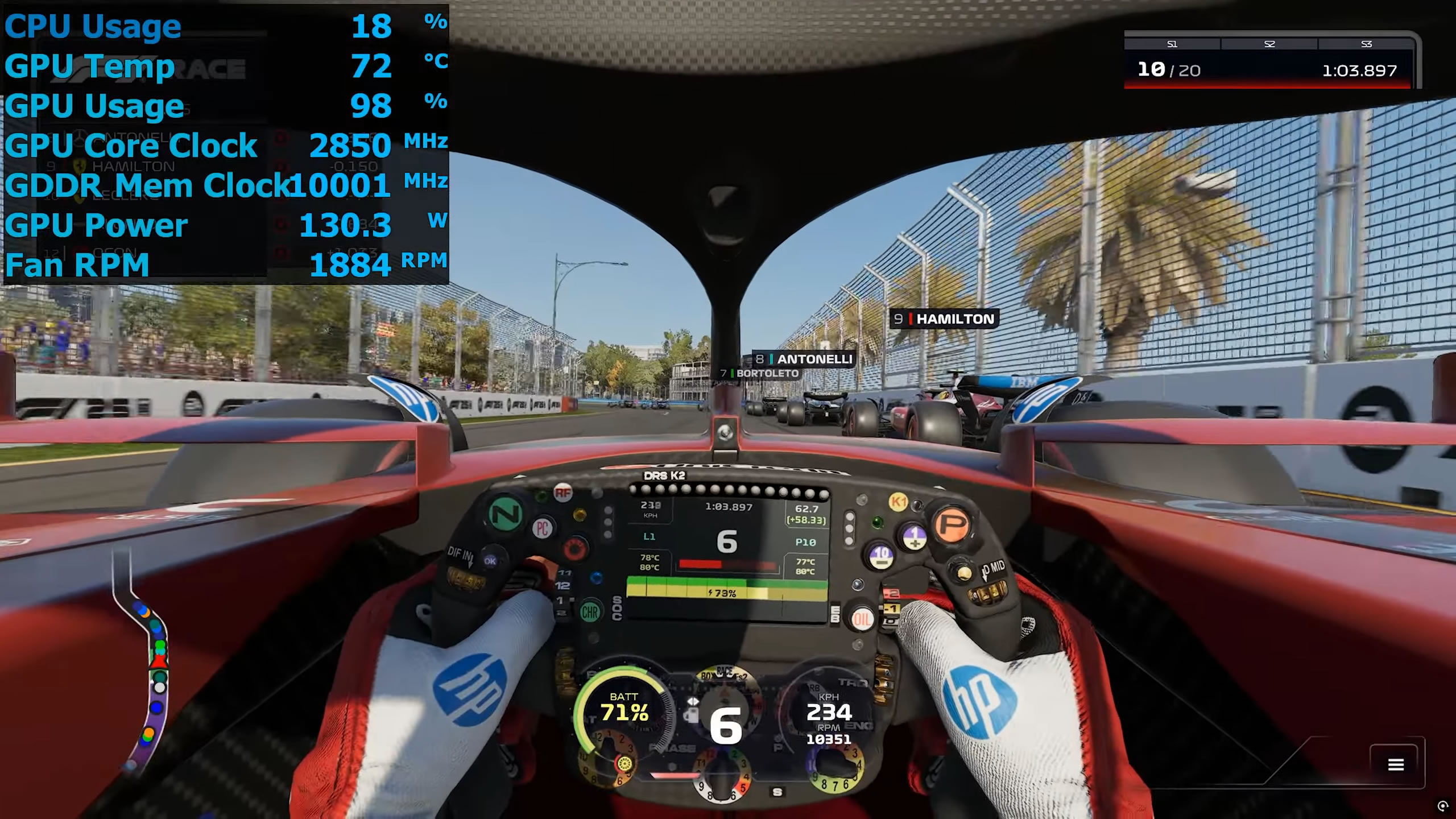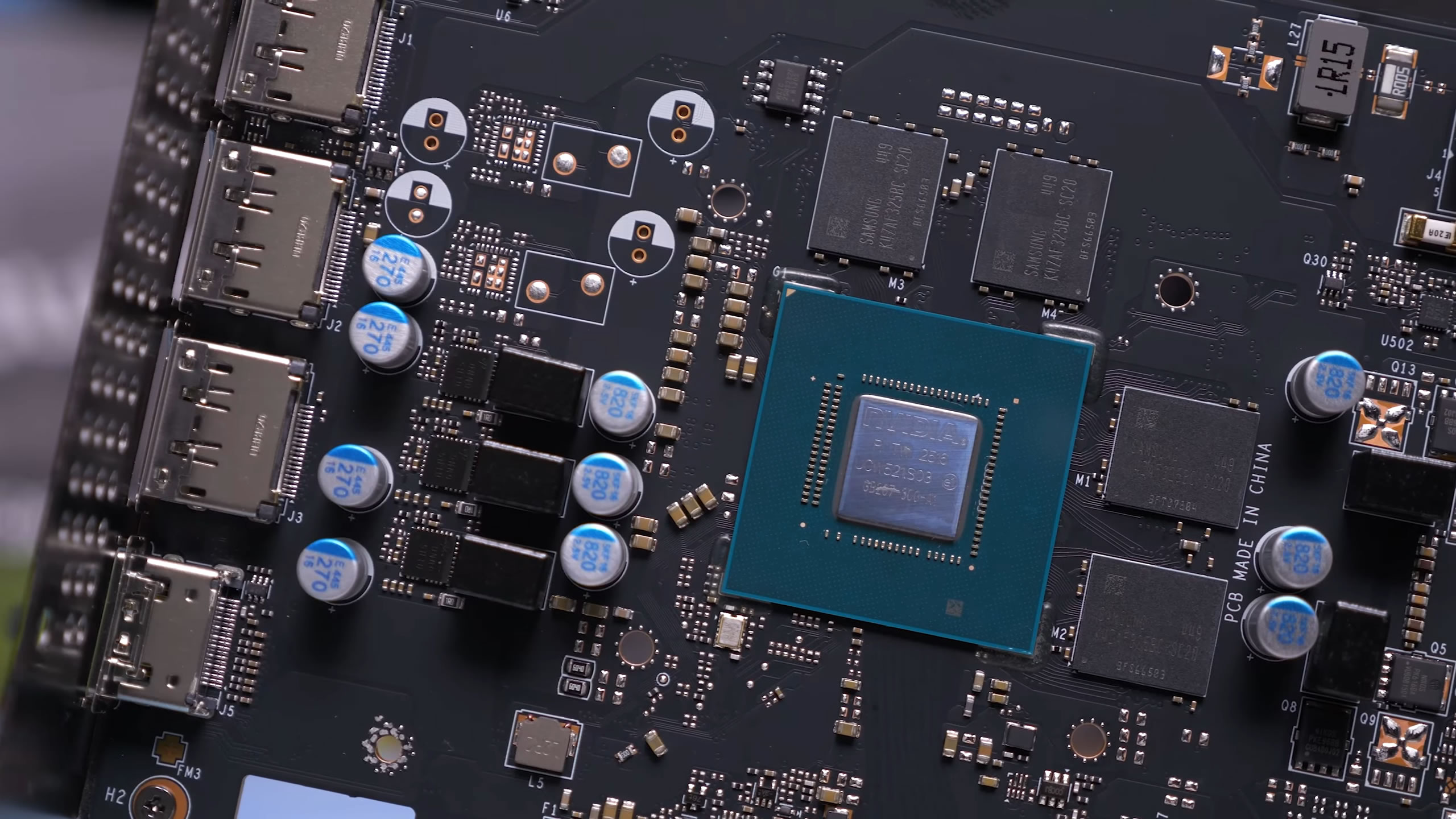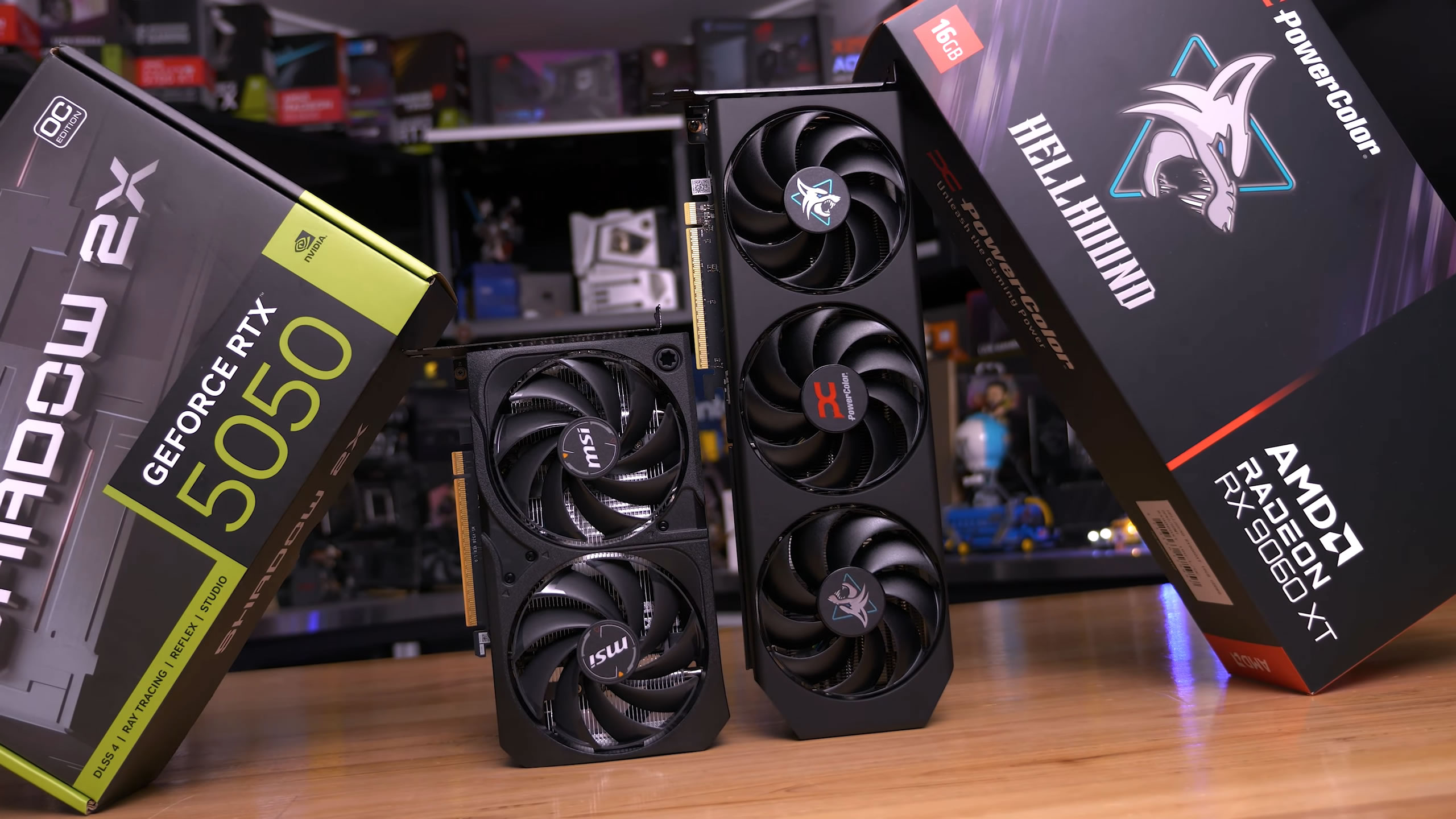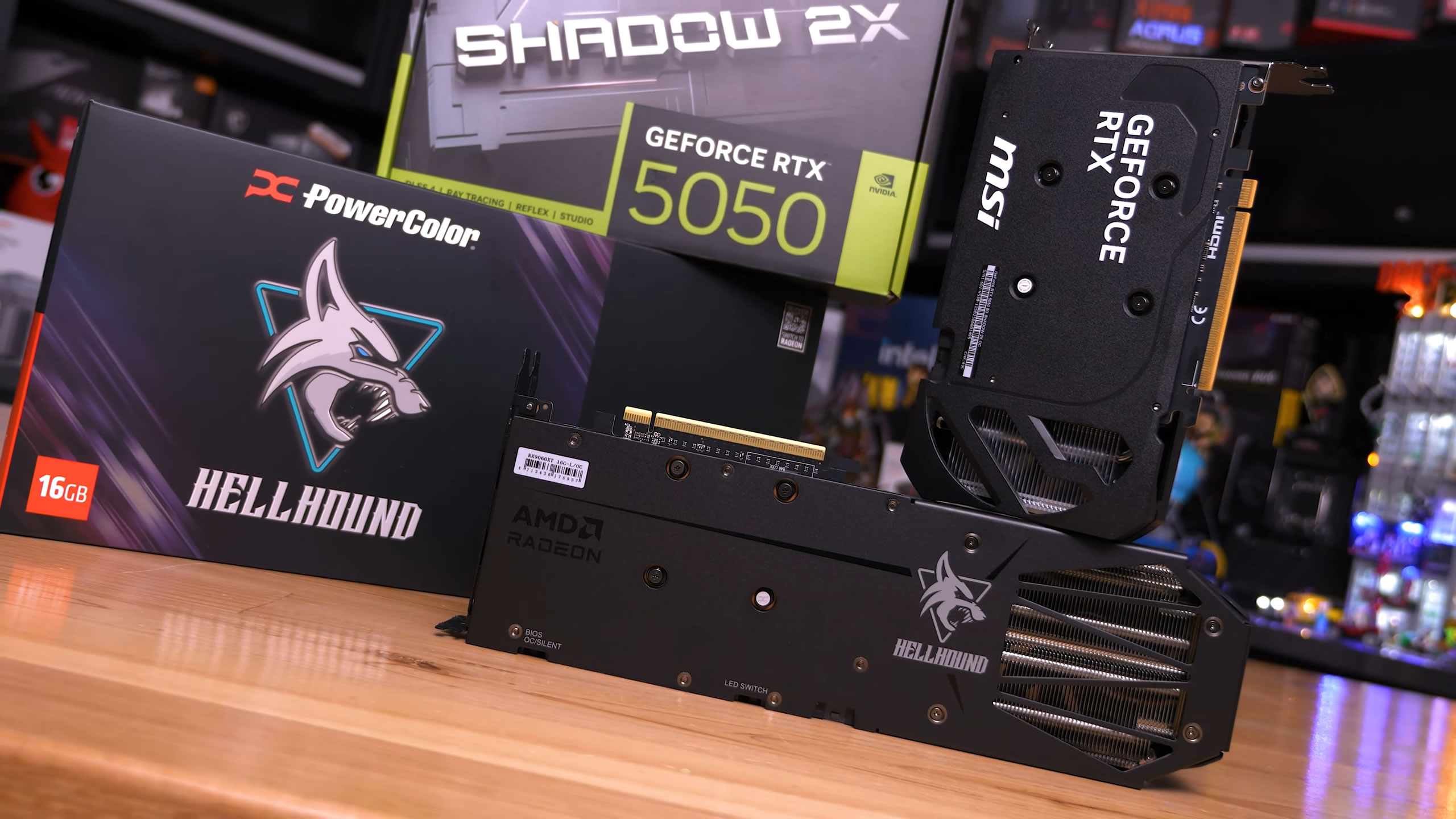Another GeForce GPU has launched. And once again, Nvidia would prefer you not know much about it before opening your wallet. This time, they announced that the GeForce RTX 5050 would be available on July 1, and that was it. If you were hoping for third-party data to guide your purchase, you were out of luck. Consumers were expected to buy with no real information. But here's the good news: you don't have to go in blind.
This isn't Nvidia's first time playing the no-review game with the GeForce 50 series. The same approach was used with the RTX 5060 Ti 8GB earlier this year. While the 16GB version was fair game for reviewers, the lower-memory model was kept under wraps. Board partners like MSI and Asus were reportedly barred from sending out review samples, and retail availability was delayed just long enough for the more flattering 16GB coverage to dominate the conversation.
The strategy worked. Coverage of the 8GB model was sparse and late. Then came the RTX 5060 – an 8GB-only card. This time, review units were technically shipped, but reviewers were locked out of driver access, rendering the hardware nearly useless. Adding to the timing, Nvidia chose to launch it during Computex, when much of the global tech press was tied up in Taiwan, ourselves included.
Now we have the RTX 5050, the third 8GB Blackwell-based card. This time, there were no review samples at all, so driver access wasn't even a concern. In fact, we weren't able to purchase one until several days later – a highly unusual rollout, even by Nvidia standards.
The good news – if we can call it that – is that we now have an RTX 5050 in hand. We paid a little over $500 AUD for it. It's certainly not the best investment we've ever made, but a review needs to happen.
| RTX 5050 | RTX 5060 | RTX 4060 | RTX 5060 Ti | |
|---|---|---|---|---|
| Price MSRP | $250 | $300 | $380 / $430 | |
| Release Date | July 1, 2025 | May 19, 2025 | June 29, 2023 | April 16, 2025 |
| Process | TSMC 4N | |||
| Die Size (mm²) | 149 mm² | 181 mm² | 158.7 mm² | 181 mm² |
| Core Config | 2560 : 80 : 32 | 3840 : 120 : 48 | 3072 : 96 : 48 | 4608 : 141 : 48 |
| L2 Cache (MB) | 32 MB | 24 MB | 32 MB | |
| GPU Boost Clock | 2572 MHz | 2497 MHz | 2460 MHz | 2572 MHz |
| Memory Capacity | 8GB | 8GB / 16GB | ||
| Memory Speed | 20 Gbps | 28 Gbps | 17 Gbps | 28 Gbps |
| Memory Type | GDDR6 | GDDR7 | GDDR6 | GDDR7 |
| Bus Type / Bandwidth | 128-bit , 320 GB/s | 128-bit , 448 GB/s | 128-bit , 272 GB/s | 128-bit , 448 GB/s |
| PCIe Bus Interface | PCIe 5.0 x8 | PCIe 4.0 x8 | PCIe 5.0 x8 | |
| Total Board Power | 130 W | 150 W | 115 W | 180 W |
Before jumping into benchmarks, let's run through the basics. The RTX 5050 is priced at $250, undercutting the RTX 5060 by $50. It uses the smaller GB207 die with 16.9 billion transistors packed into a 149 mm² chip. That's a 17% cost reduction compared to the 5060, but it also has 33% fewer cores.
Memory specs also take a hit. The card swaps GDDR7 for GDDR6, cutting bandwidth by 29% down to 320 GB/s. Taken together, this suggests the RTX 5050 could land significantly behind the 5060 in performance, and potentially fall flat in terms of value.
For testing, most games were benchmarked using high-quality presets. We understand this may not be ideal for actual gameplay scenarios, but this approach allows us to compare results across a broad range of GPUs, from the RTX 5050 all the way up to the RTX 5090. While re-testing with low or medium settings would improve frame rates, the relative performance differences between cards – such as the RTX 5050, 5060, and 9060 XT – would remain similar. However, if there's enough interest, we'll re-test a selection of budget GPUs using lower presets in a dedicated piece.
As for the CPU, we used our usual Ryzen 9800X3D build to ensure all GPU data is comparable. In an upcoming follow-up, we'll compare all current and previous generation GPUs. Benchmarking with a high-end CPU helps remove bottlenecks, which is critical for meaningful comparisons – except in rare edge cases with excessive CPU overhead.
For example, using a Ryzen 5 7500F, we'd still see similar relative performance between the RTX 5050 and 9600 XT, as both scenarios are largely GPU-limited. Keep that in mind as we move on to the benchmarks to see what the RTX 5050 has to offer.
Test System
| CPU | AMD Ryzen 7 9800X3D |
| Motherboard | Gigabyte X670E Master [BIOS F34b] Resizable BAR Enabled |
| Memory | G.Skill Trident Z5 RGB DDR5-6000 [CL30-38-38-96] |
| Graphics Cards |
GeForce RTX 5050
GeForce RTX 3060 GeForce RTX 5060 GeForce 3060 Ti GeForce RTX 5060 Ti 16G GeForce RTX 3070 GeForce RTX 5060 Ti 8G GeForce RTX 4060 Intel Arc A770 16G GeForce RTX 4060 Ti 16G Intel Arc B580 GeForce RTX 4060 Ti 8G Radeon RX 6600 GeForce RTX 4070 Radeon RX 6650 XT Radeon RX 6700 XT Radeon RX 7600 Radeon RX 7600 XT Radeon RX 7700 XT Radeon RX 7800 XT Radeon RX 9060 XT 16G Radeon RX 9060 XT 8G |
| ATX Case | MSI Prospect 700R |
| Power Supply | Kolink Regulator Gold AT X 3.0 1200W |
| Storage | TeamGroup T-Force GE Pro M.2 PCIe Gen5 NVMe SSD |
| Operating System | Windows 11 24H2 |
| Display Driver | Nvidia GeForce Game Ready Driver 576.88 AMD Radeon Adrenalin Adrenalin 25.6.3 Intel Graphics Driver 32.0.101.6913 |
Benchmarks
Marvel Rivals
First up, we have Marvel Rivals at 1080p. Here, the RTX 5050 averaged 50 fps – playable performance, and of course, lowering the quality preset would improve that further. It was 25% faster than the RX 7600, a similarly priced previous-generation product, and even matched the Intel Arc B580. However, the 8GB 9060 XT was 25% faster.
Given it costs around 20% more, that translates to only a slight advantage in terms of value. Overall, the RTX 5050 looks decent in this test. It is not going to impress anyone with its performance, even at $250, but it's passable – or close enough.
Star Wars Jedi: Survivor
Next is Star Wars Jedi: Survivor. Again, the 1080p performance is solid, with an average of 70 fps. However, that's only enough to roughly match the Arc A770 and the older Radeon RX 6650 XT – not particularly impressive. Worse still, the 8GB 9060 XT was 41% faster, a significant leap considering the modest price difference.
Cyberpunk 2077: Phantom Liberty
Cyberpunk 2077 is another title where the RTX 5050 provides reasonable performance using the high preset at 1080p. An average of 72 fps is certainly playable, but compared to several other entry-level GPUs, it falls short. For instance, it's only a few frames ahead of the older RTX 3060 and again matched the 6650 XT and Arc A770. The disappointment becomes obvious when compared to the 8GB 9060 XT, which delivered 111 fps – 54% faster – resulting in a significantly smoother experience.
Hogwarts Legacy
Moving on to Hogwarts Legacy, tested using the high preset (the second-highest setting), the RTX 5050 again averaged 70 fps. That puts it on par with the Arc B580, RTX 4060, and 6650 XT.
Meanwhile, the 8GB 9060 XT was once again far ahead, offering 50% better performance with an average of 105 fps. Given the relatively small price gap, this spells trouble for the 5050 from a value standpoint.
The Last of Us Part I
For The Last of Us Part I, we used the Ultra preset, as most GPUs can handle over 60 fps here. The RTX 5050 was slightly slower than the RX 7600 but stayed ahead of the 6650 XT. Still, performance wasn't particularly strong, especially when the 8GB 9060 XT came in nearly 40% faster.
Star Wars Outlaws
Star Wars Outlaws enables ray tracing by default, giving us a look at the RTX 5050's RT performance. We saw just 34 fps on average, which is identical to the RX 7600 and only slightly better than the Arc A770. The 8GB 9060 XT, by contrast, delivered 50 fps – almost 50% faster – highlighting the 5050's limitations in ray-traced workloads.
Warhammer 40,000: Space Marine 2
As in Marvel Rivals, the RTX 5050 is somewhat competitive in Space Marine 2. Here, the 8GB 9060 XT was 22% faster, so their value is roughly comparable. The 5050 matched the RTX 4060 and 6700 XT, which is a respectable showing.
Call of Duty: Black Ops 6
We did not expect the RTX 5050 to perform especially well against the 8GB 9060 XT in Call of Duty: Black Ops 6, as Radeon GPUs typically excel in this title. But an average of just 60 fps at 1080p was particularly underwhelming. That made it only marginally faster than the RTX 3060 and RX 6600, while it lagged behind the 6650 XT and Arc B580. Meanwhile, the 9060 XT was 100% faster.
Clair Obscur: Expedition 33
Finally, in Clair Obscur: Expedition 33, the 8GB 9060 XT was 38% faster than the RTX 5050. The 5050 was comparable to the RTX 4060 and 7600 XT, along with the Arc B580 and RX 7600.
Power Consumption
As noted earlier, the RTX 5050 features a 130W TDP and requires a single PCIe power input. For our testing, we measured total system power draw for both the GPU and CPU, as this accounts for any CPU overhead.
The RTX 5050 consumes roughly the same amount of power as the RTX 4060, using around 60 watts less than the 9060 XT. This represents a reasonable power saving, though of course, it was significantly slower in our gaming benchmarks.
Performance Summary
1080p
Here's how the RTX 5050 performed on average at 1080p across all 18 games tested. The average frame rate came in at 66 fps, which, disappointingly, made it 3% slower than the RX 7600. In other words, you're getting RX 7600 performance for RX 7600 pricing. That said, the GeForce 5050 does benefit from improved upscaling support, which is a small bonus.
The bigger issue for the RTX 5050 is the 8GB 9060 XT. While it may cost $50 more – a 20% price premium – the Radeon GPU was 44% faster on average in our testing. We do not recommend spending money on any 8GB GPU in 2025. Instead, we suggest opting for the 16GB version of the 9060 XT.
While it is considerably more expensive than the RTX 5050, it is likely something you'll keep for the next four years or more. Viewed as a long-term investment, it makes much more sense to spend extra on a GPU that will actually last.
1440p
Looking at the overall 1440p benchmark data, we see that the 9060 XT is now 56% faster on average. This is partly due to the Radeon GPU handling the increased load better, and also due to its full PCI Express x16 bus, which helps minimize some VRAM-related limitations.
The 16GB version of the 9060 XT was almost 80% faster than the RTX 5050 at 1440p, and delivered 96% stronger 1% low performance. That makes it the clear value leader among budget GPUs.
Cost per Frame
MSRP
Here's a historical look at value across the generations based on MSRP, though we acknowledge MSRP is not always meaningful in practice. For example, the RX 7600 was originally priced at $270 and later dropped to $250. Comparing the RTX 5050 to the RX 7600 at its $270 MSRP, we find the 5050 only improves cost per frame by 5% – a marginal gain at best.
Worse still, the RTX 5050 actually offers worse cost per frame than the 8GB 5060 Ti, by about 3%. Value is supposed to improve as you move down the product stack, not decrease. It gets even more concerning when comparing to the 9060 XT.
If the 16GB model were available at $350, it would be 7% better value, and the 8GB version already offers 20% better value based on this data. That is a very poor showing for Nvidia's new budget GPU.
Retail
Now let's look at what you can actually buy at retail. In terms of real-world value, the RTX 5050 is slightly worse than the 16GB 9060 XT, the 8GB 5060 Ti, and notably worse than the RTX 5060. It also costs 20% more per frame than the 8GB 9060 XT.
If 8GB of VRAM is acceptable to you, the 9060 XT is a much better buy. Still, we recommend saving for the 16GB model. It is significantly faster, handles 1440p gaming well, and will age far better – in fact, it already is.
Retail (1440p)
Recalculating cost per frame based on 1440p data, the RTX 5050 ends up costing 30% more per frame compared to the 16GB 9060 XT – up from 20% at 1080p. So if you're planning to play at higher resolutions with better settings, or just want a more future-proof solution, the 16GB models clearly represent much better value.
MSI Shadow RTX 5050 Graphics Card
Before we wrap things up, here's a quick look at the MSI Shadow version of the RTX 5050, a compact dual-fan card with a plastic backplate. After a one-hour loop in F1 25, we recorded a peak GPU temperature of 73°C, which is reasonably cool. However, the fans spun at 1,900 RPM and were clearly audible over the case fans, generating 38 dBA of noise.
These are underwhelming results, especially considering the card only consumed 131W of power while running at 2,850 MHz.
The cooling design likely explains the noise: it features an aluminum baseplate with just a single 6mm copper heat pipe in direct contact with the GPU. That is simply not enough for efficient or quiet cooling.
Power Efficient, Performance Deficient
In short, the GeForce RTX 5050 is a slightly slower version of the RTX 4060 at a slightly reduced price, an underwhelming upgrade after two years. If you're shopping for a new GPU, this is not the one we would recommend.
The RTX 5060 is only 20% more expensive but offers just over 30% better performance. An even better deal comes from AMD with the 8GB 9060 XT, which also costs 20% more but is ~40% faster in our testing.
Of course, the Radeon 9060 XT 8GB is still a product we strongly recommend avoiding. Instead, the 16GB model is considerably more capable and will retain its value far better. In terms of cost per frame, the 16GB 9060 XT is also slightly better value than the RTX 5050, even when factoring in a slightly above-MSRP price of $370. And even with a $130 premium, it is by far the smarter option.
But, we understand this is not a small difference to pay, and unfortunately, not everyone can afford to spend more. But if that is the case, we still strongly recommend stretching your budget by an extra $50 for the 8GB 9060 XT, or at the very least, the RTX 5060. The RTX 5050 is a disappointing product at $250. At that point, you might be better off trying your luck on the secondhand market.
As for ray tracing performance, since the RTX 5050 is generally a little slower than the RTX 4060, you can expect similar results there as well. We have not updated RT benchmark data across all low-end GPUs yet, as most of them cannot handle ray tracing effectively, making it a low priority.
However, one example comes from Cyberpunk 2077 using what we call "transformative" RT settings. Here, the RTX 5050 delivered just 46 fps on average at 1080p using quality upscaling – not exactly what we would consider a good experience.
The only real strengths of the RTX 5050 are its low power consumption, which helps it run cool and creates the potential for quiet operation. However, the MSI Shadow model we tested was quite basic and featured a mediocre cooler. Since this is an MSRP model, it may reflect the standard, though it's hard to say for sure having only examined one version so far. On the bright side – if we're being a bit sarcastic – at least there isn't a confusing 4GB and 8GB version of the same RTX 5050.
Perhaps the most notable feature of the RTX 5050 is that it delivers DLSS 4 support at the lowest price point yet. But that alone does not make it a good value. You would still be better off with a GPU from the RTX 5060 series if you want to get the most out of your investment while getting some DLSS 4 goodness. And that's going to do it for our coverage of the RTX 5050 – for now.
